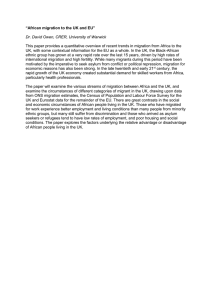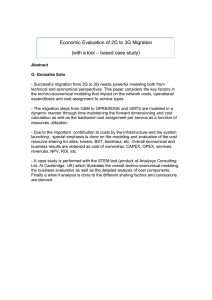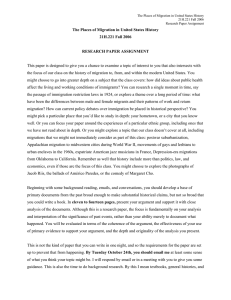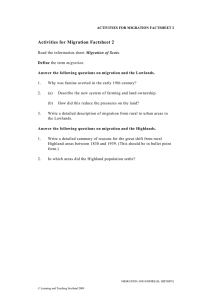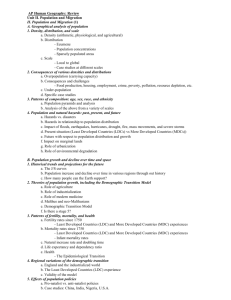Grade 8 Migration Review: Factors, Effects, and Culture
advertisement
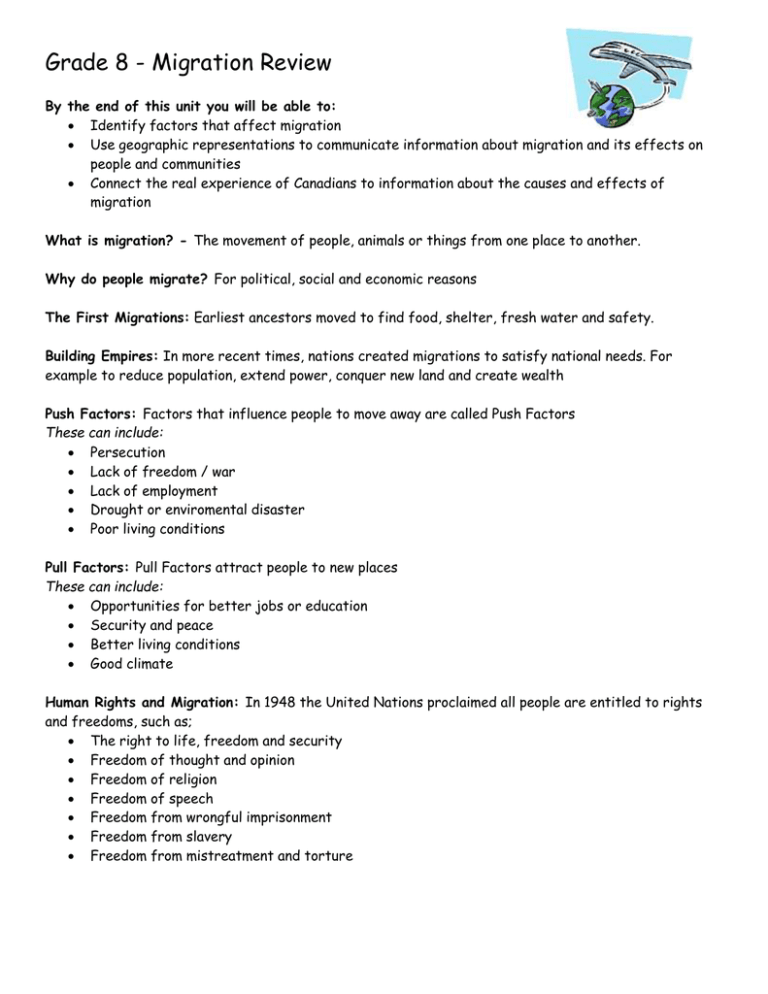
Grade 8 - Migration Review By the end of this unit you will be able to: Identify factors that affect migration Use geographic representations to communicate information about migration and its effects on people and communities Connect the real experience of Canadians to information about the causes and effects of migration What is migration? - The movement of people, animals or things from one place to another. Why do people migrate? For political, social and economic reasons The First Migrations: Earliest ancestors moved to find food, shelter, fresh water and safety. Building Empires: In more recent times, nations created migrations to satisfy national needs. For example to reduce population, extend power, conquer new land and create wealth Push Factors: Factors that influence people to move away are called Push Factors These can include: Persecution Lack of freedom / war Lack of employment Drought or enviromental disaster Poor living conditions Pull Factors: Pull Factors attract people to new places These can include: Opportunities for better jobs or education Security and peace Better living conditions Good climate Human Rights and Migration: In 1948 the United Nations proclaimed all people are entitled to rights and freedoms, such as; The right to life, freedom and security Freedom of thought and opinion Freedom of religion Freedom of speech Freedom from wrongful imprisonment Freedom from slavery Freedom from mistreatment and torture Forced Migration: Sometimes people have to leave their homelands against their will e.g. Slavery - Between 1500 and 1850, millions of Black Africans were captured, herded into ships and transported to the Americas Forced Dislocation: In North America, European settlers forced many First Nations peoples to move from their lands and onto reserves - Japanese Canadians were also dislocated after Pearl Harbour to BC internment camps in the 1940s Barriers: barriers are obstacles which prevent people from migrating. For example; Political barriers: laws prohibiting people from leaving the country Physical barriers: distance, ocean, mountains, walls or fences Economic barriers: not having enough money to move Legal barriers: limits to the number of people the new country will let in Procedural barriers: getting passports and visas Culture: a culture is a way of life shared by a group of people. Culture gives us our identity and helps us sustain it. It helps people define who they are. People in a cultural group: Use a shared language to communicate with each other Share relgious beliefs Are members of families and communities Share activities such as celebrations and holidays Produce goods and provide services in distinctive ways Educate their children about their way of life Use stories, art, music and dance to express who they are Assimilation: is the result of one culture changing to fit, or to be more like, another Cultural diffusion: the peaceful spreading of cultural ideas from one group to another Mainstream populatation: is the major cultural group in a society Canada’s government has a policy of multiculturalism. In Canada, we want to understand each other’s heritages, and to celebrate our diverse cultures together. Racism: is hostile discrimination against people based on their ethnicity. Xenophobia: is the fear of strangers, particularly a mistrust of people who look and act differently



